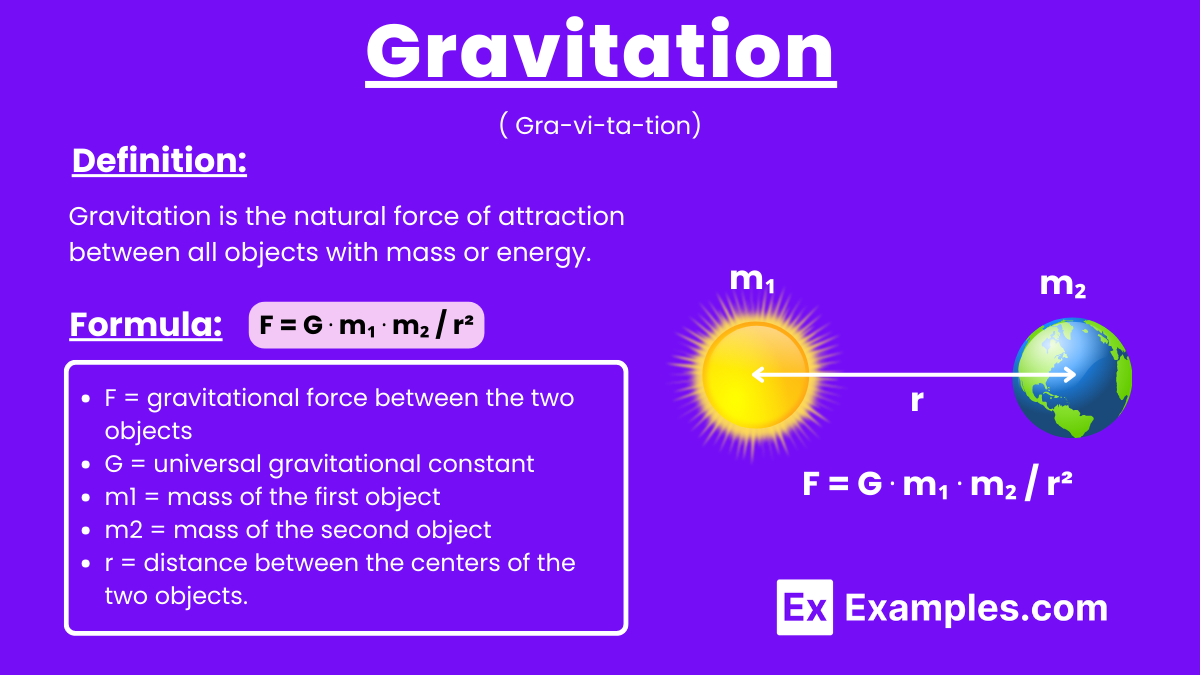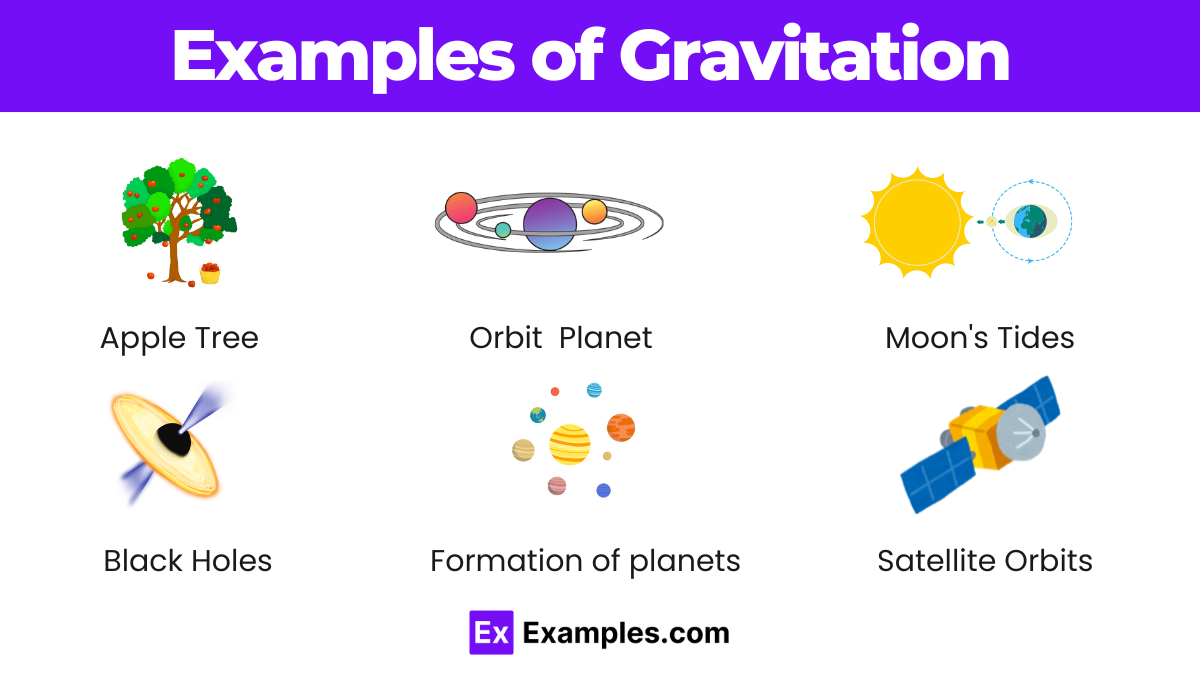If the distance between two masses is doubled, how does the gravitational force between them change?
It becomes one-fourth
It becomes one-half
It becomes twice
It remains the same


Gravitation is the force of attraction that acts between all masses in the universe, causing them to be drawn toward one another. This fundamental interaction is responsible for the motion of celestial bodies, the structure of galaxies, and the phenomenon of objects falling to the ground on Earth. Described by Isaac Newton’s Law of Universal Gravitation. Gravity is the force that pulls objects toward the Earth, and gravitational acceleration Formula on Earth is approximately 9.8 m/s². Gravity Formula quantifies this force of attraction, highlighting the relationship between mass and distance.
Gravitation is the natural force of attraction between all objects with mass or energy. It causes planets to orbit stars, moons to orbit planets, and governs the motion of celestial bodies. First described by Isaac Newton and later refined by Albert Einstein, gravitation is essential to the structure and behavior of the universe.
The gravitational force between two objects can be calculated using Newton’s law of universal gravitation, given by the formula.
where:

Sir Isaac Newton discovered the law of gravitation in the 17th century, explaining how objects attract each other with a force proportional to their masses.
The universal law of gravitation states that every mass attracts every other mass with a force directly proportional to their masses and inversely proportional to the square of their distance.
Weight is the force of gravity acting on an object’s mass, calculated by W=mg, where g
gg is the acceleration due to gravity.
The acceleration due to gravity on Earth is approximately 9.8 m/s²
Objects fall to the ground due to Earth’s gravitational pull, which accelerates them towards the center of the planet.
In the absence of air resistance, all objects fall at the same rate regardless of their mass due to uniform acceleration by gravity.
Gravity keeps planets in orbit by providing the centripetal force needed to balance their inertia, causing them to follow curved paths around the Sun.
A black hole is a region in space with an extremely strong gravitational pull, from which nothing, not even light, can escape.
Gravity from the Moon and the Sun causes tidal forces on Earth, leading to the rise and fall of ocean levels.
Microgravity is the condition where objects appear weightless and experience very weak gravitational forces, often encountered in orbiting spacecraft.
Text prompt
Add Tone
10 Examples of Public speaking
20 Examples of Gas lighting
If the distance between two masses is doubled, how does the gravitational force between them change?
It becomes one-fourth
It becomes one-half
It becomes twice
It remains the same
Which of the following correctly describes the direction of the gravitational force?
Away from the center of mass
Toward the center of mass
Perpendicular to the center of mass
In any random direction
What is the gravitational acceleration on the surface of the Earth?
9.8 m/s²
9.0 m/s²
8.9 m/s²
10.0 m/s²
What is the relationship between gravitational force and the masses of two objects?
Inversely proportional
Exponentially proportional
Directly proportional
No relationship
If the mass of an object is doubled while the distance between two objects remains the same, how does the gravitational force change?
It doubles
It becomes one-half
It remains unchanged
It quadruples
Which celestial body has the highest surface gravity?
Moon
Earth
Jupiter
Mars
What would be the effect of increasing the distance between two masses on their gravitational force?
The force increases
The force decreases
The force remains the same
The force becomes zero
What happens to the gravitational force if both masses are doubled and the distance between them is also doubled?
The force is quadrupled
The force remains the same
The force is halved
The force is doubled
Which principle does the gravitational force between two objects follow?
Coulomb’s law
Newton’s law of gravitation
Hooke’s law
Ohm’s law
How does the gravitational force between two objects change if the distance between them is reduced to half?
The force is quadrupled
The force is doubled
The force is halved
The force remains the same
Before you leave, take our quick quiz to enhance your learning!

